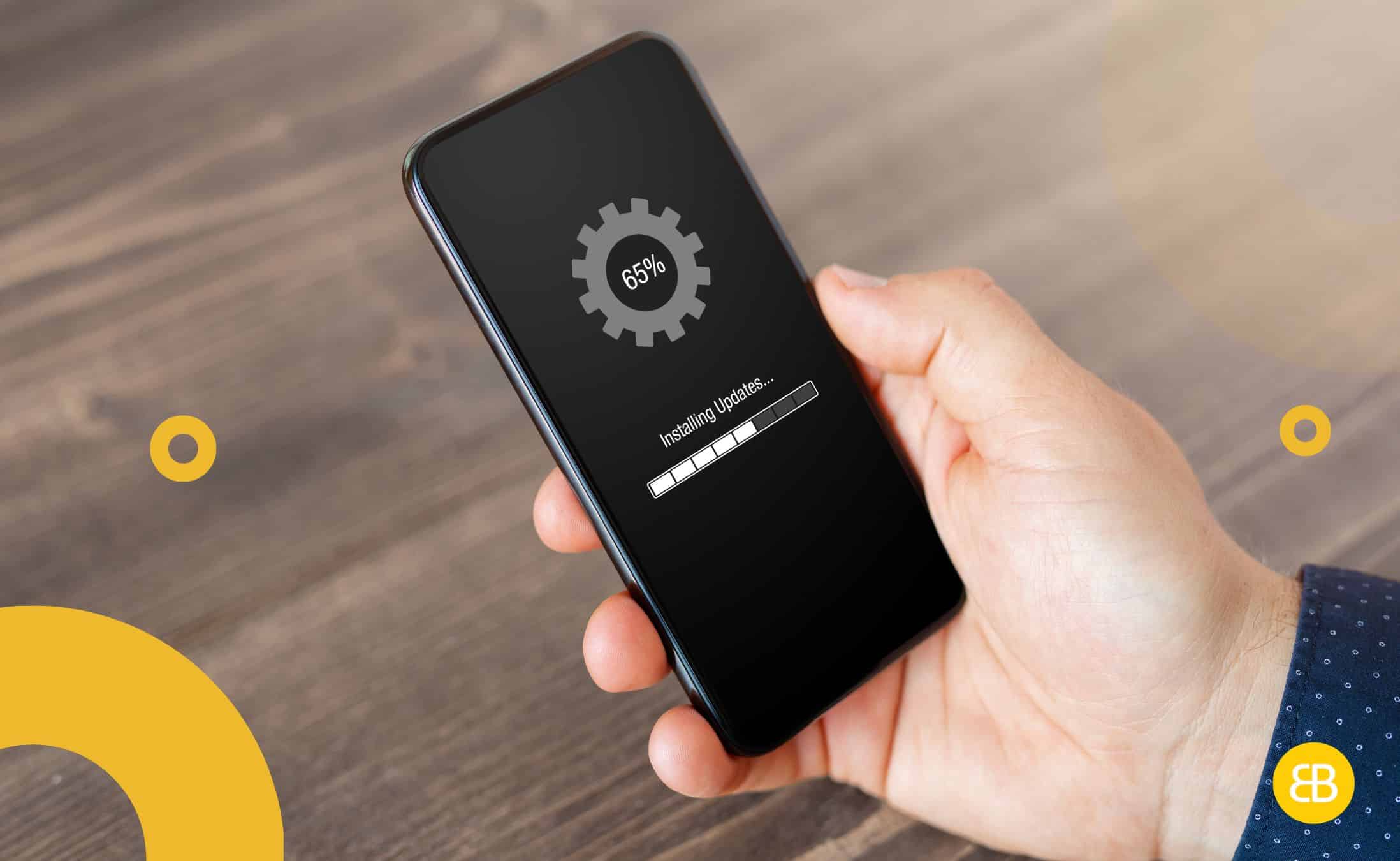iOS 14 updates and mobile app development

15 Jul 2020
ContentBinisha Sharma
Table of Contents
iOS 14 is the latest iPhone operating system coming to devices sometime in September. As app developers, we take a keen interest in these updates as they often include new features that change the way we go about our work. We’ve had some hands-on experience and looked at everything that’s coming our way, and there are some big changes afoot.
So, we’ve written this review that looks at iOS 14 and what it means for iPhone app development in the future. What are the standout features for developers? How can these features be used to improve current and future apps? All of this will be discussed in the content below.
New Features Coming To iOS 14
Before we dive into our analysis, here’s an overview of what’s coming to Apple devices in iOS 14:
- App Clips
- Widgets
- New privacy features
- Augmented reality tools
- Indicator light
- Picture in Picture
- Updated Maps App
- New translation app
- App Library
- Compact calls
- Improved Messages features
- Improved Home app
- Cark keys and CarPlay
As you can already see, there’s a lot to unpack here. This doesn’t even include all the minor updates to other apps – like Photos – that are also coming in iOS 14. For the sake of saving time, we’re only looking at the most important updates that will affect your life the most. If you’d like a complete rundown of all the features, Apple has a list here. Feel free to check that out, but be warned, there’s a lot to scroll through!
Top iOS 14 Features For App Development
As app developers, we’re keen to look at some of the top features that have an impact on our current and future apps. Below, we’ve listed the most significant updates brought to the iPhone app development world. By taking a closer look at each one, we’ll explain what the feature means and how it changes the way we go about our work.
App Clips
One of the flagship features for iOS 14 is the App Clips functionality. This is a brand new concept that will rock the app development world. For years, iPhone app development has been relatively straightforward in the sense that you develop an app, and that’s it. Now, App Clips offers an alternative to this traditional model.
Effectively, they are mini-apps for the iPhone. Instead of downloading an entire app, users have access to limited features instantly. Upon opening the app using App Clips, the user can complete a specific task, then the app closes and goes away. It hasn’t been downloaded, meaning users don’t have to sacrifice any storage space.
App Clips can be launched through various methods:
- Links in messages/on a website/in Maps
- NFC tags
- Qr Code
From a developer’s standpoint, this opens up a range of different possibilities. App Clips can be used to create condensed and watered-down versions of apps. The trick will be learning what features to include in this mini version of your app. This will obviously require a great deal of analysis and research to determine what the most valuable and commonly used features are. There’s also the possibility to integrate App Clips tags into an existing app, allowing users to launch App Clips when clicking them. This can be beneficial for developers with multiple apps that relate to one another.
A couple of key considerations for developers are that App Clips use the native iOS SDK and are supposed to be small. They’re not meant to exceed 10mb, so keep this in mind when developing. The idea is that they can be loaded up instantly, used, then disappear.
In the future, we expect to develop apps that come with an App Clips version to allow anyone to access the key features right away. This can be useful in gaining more users for your apps and increasing engagement. Of course, we can also use this new feature to go back through the current apps we’ve developed for clients and update them to be used with App Clips
Widgets
Apple has always been quite relaxed in its relationship with widgets. Until iOS 14 was announced, widgets were only available in the Today View, where they didn’t provide that much information. Now, developers have been given more freedom to create content-rich widgets for the home screen. It’s a way to let users personalise their screens and see the most important data and content at a glance.
The example Apple provides is a home screen with calendar, stocks, weather, and cock widgets. Without needing to load up any apps, the user instantly sees their main agenda for the day, a key stock market price, the five-day weather forecast, and the precise time.
Naturally, this new feature can be used at great length by iPhone app developers. Again, it’s a wonderful way of increasing engagement with your apps and improving the user experience. We can develop widgets for an app that provides the user with a host of critical information that they see without needing to enter the app. We can offer clients a choice as to if they want an app widget and what they want to use it for.
As well as providing more information for users, you can also use widgets to turn your apps into powerful marketing tools. We can work with clients to advertise certain products or services available in the app. For example, if your app sells products, we can craft an iPhone widget that displays the latest products or top discounts based on the user’s buyer behaviour. As they scroll through their phone they’ll see the widget, notice a new deal, and can click the app and be taken straight to the product. In turn, this new feature can be seen as a way of boosting sales through your app.
New Privacy Features
The new privacy features in iOS 14 are incredibly important for app developers. Upon release, apps will need to ask permission from the user to access their data when they’re using other apps or websites. With the relatively recent introduction of GDPR, many app developers have already taken steps to improve the data security of applications. This is yet another step towards making apps more secure for users.
As such, we will make sure that all of our current and future apps are coded to include the new privacy features. This means they’ll be made with the privacy agreement popping up whenever a user downloads the app for the first time.
Augmented Reality Tools
iOS 14 also brings ARKit 4 to the app development world. This is the most updated version of Apples augmented reality development software. It includes a host of new features that you can take huge advantage of.
The first is Location Anchoring, which allows developers to anchor 3D AR models to specific locations in the world – calling upon Maps for help. There have also been updates to the Depth API system, which allows you to create more accurate objects for placement in the real world. Finally, one of the biggest chances is face tracking compatibility via the Apple Neural Engine. In essence, you can now track faces a lot better to be used when developing AR features.
As you can imagine, this has many possibilities in iPhone app development. Applications that use the camera will be able to play around with the improved face tracking to develop new filters, etc. Other apps – like shopping ones – can utilise the enhanced depth perception and AR modelling to create 3D versions of products. This gives users a chance to view the products in their home or from a different perspective.
Augmented reality will be a huge player in app development in the coming years. The most recent statistics forecast a $7 billion global spend on AR/VR in 2020. It’s certainly a trend that can’t be ignored. With the introduction of ARKit 4 in iOS 14, it can provide developers with better tools to improve the AR experience for users.
Consequently, we have the ability to develop apps with unique AR features that couldn’t exist before this update. It’s a chance for you to push the bar even further when providing a great product for your target market. AR is also an excellent way to engage users and keep people on your app for longer, while also retaining a solid user base over time.
Indicator Light
The indicator light is technically part of the upgraded privacy features in iOS 14. However, it deserves to be looked at on its own as it has significant ramifications for an app developer. The idea is that an indicator light shows at the top of the screen when an app is using either the camera or microphone. It’s a green dot for the camera and an orange one for the microphone. This indicator light displays when the apps are running in the background as well.
We see this as a critical feature as many of our clients need to access the camera or microphone for their apps to work. So, we’ll update all the existing apps to ensure they’re coded to set off these indicator alerts. All of our future apps will similarly be coded in this way.
Picture in Picture
The last feature that directly impacts app development is Picture in Picture. Funnily enough, this has existed on iPads for some time. It’s a feature that lets users continue to watch a video even when they’re not using the source app. Instead of closing completely, this feature lets you see a small screen with the video playing. Apple is mainly advertising this from the perspective of Facetime. In effect, users can leave the Facetime app but still see the other person’s video, and the other person can still see them.
This is a huge feature for iPhone app development as it can alter your offering significantly. We can develop future apps that play videos and continue to pay them while the user accesses other apps on their phone. From a client’s perspective, we know this will interest you as it keeps hold of your audience. They can run your app in the background even while they’re doing lots of other things. As such, you retain your audience and boost engagement levels through the roof.
What does iOS 14 mean for iPhone App Development?
After looking at these new features, we’ve underlined four key ways that iOS 14 impacts app development:
- Increased innovation
- Enhanced app performance
- Improved user engagement
- Updated app security for users
Each of the features we discussed above will impact at least one of these four things in some way. App Clips is highly innovative, but it is designed to boost performance and engagement by offering a watered-down version of an app. Users don’t have to wait for an app to load or to find what they’re looking for, they click the link, the App Clip fires up, they complete an action, and it’s done. If we integrate this into our future apps, we can help you gain more users and alter the way people interact with your apps.
Widgets are similarly important for engagement as they make it more likely someone will keep an app downloaded for a long time. It’s all about instantly giving users vital pieces of information that appeal to them in some way. We won’t be surprised if a lot of future apps are developed solely to be widgets and have very little else going on inside.
ARKit 4 also lets us be more innovative with our app development. We can implement AR features into far more apps than ever before. This enhances your app performance and lets you offer new experiences for users. Again, it retains their engagement and increases your download numbers.
Picture in Picture similarly becomes crucial for any future or current apps that include videos. Before, you restricted users to only watch the video in the app. It was beyond frustrating, particularly when you consider the modern mobile phone user’s short attention span. Now, we can use the Picture in Picture feature to dramatically improve how an app performs. Videos keep running when the app has been exited, meaning users can still watch as they scroll through Twitter or Instagram.
Overall, there are some very exciting new features coming to iOS in September. We have access to the iOS 14 beta, meaning we can start developing apps to work on the new operating system when it emerges. This is one of the biggest updates in recent times as some of the key features give developers a chance to significantly alter the way apps are created and used. If you have an existing project in development with EB Pearls or any other developer OR you are looking to get started with a new app idea, please contact us.
See more articles like this
See all“We’re very happy with the results of EB Pearls’ work. Since its launch, the app has had over 7,000 downloads, with around 6,000 users completing the signup process in the first 6 weeks. ”

— Founder at Intro Dating





